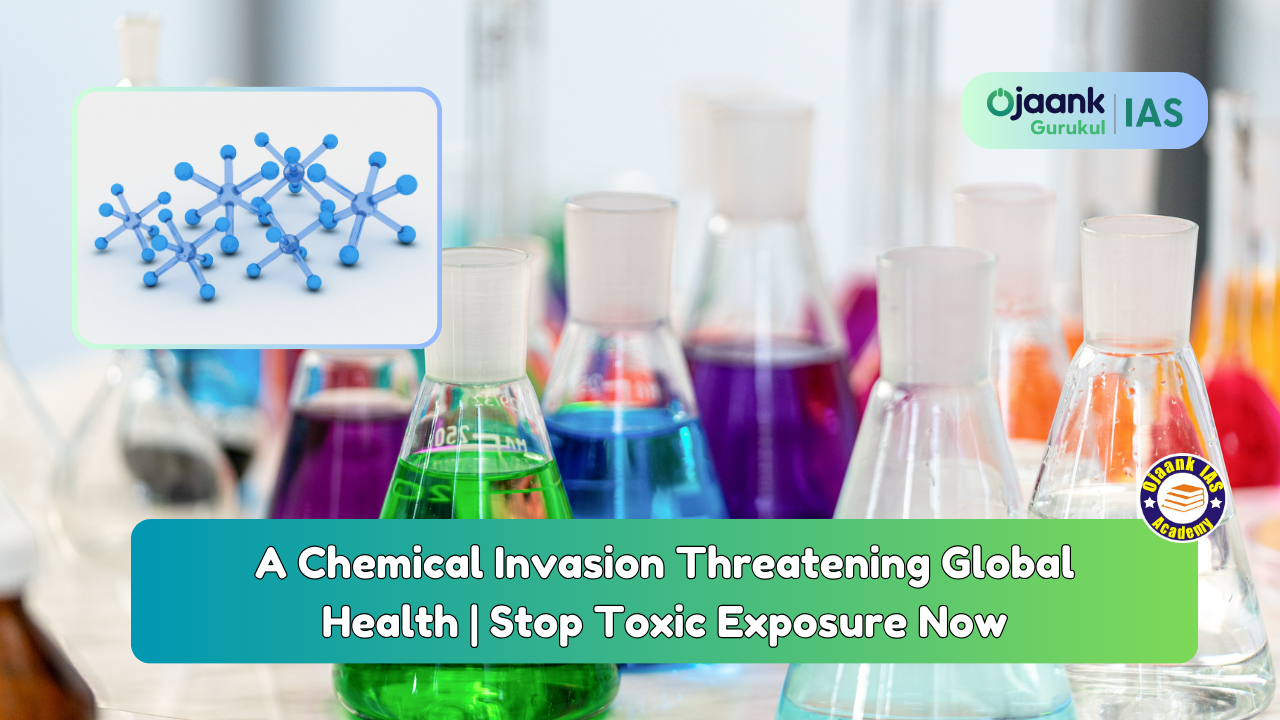A Chemical Invasion Threatening Global Health | Stop Toxic Exposure Now

The Silent Threat in Your Daily Life: A Chemical Invasion You Can’t Ignore
Wake up. Grab the non-stick pan. Tear open a snack wrapper. Wipe the table. All of these actions seem normal—safe, even. But they aren’t. Each moment is a microdose of a much bigger problem: a chemical invasion that’s slowly and silently compromising your health.
From the kitchen to the couch, our daily lives are saturated with Contaminants of Emerging Concern (CECs)—toxic compounds hiding in cookware, furniture, cleaning supplies, cosmetics, and even baby products. What’s worse? These chemicals don’t just touch your life. They live in it.
The Omnipresence of Toxic Chemicals: What’s Lurking in Your Home?
Chemicals like Per- and Polyfluoroalkyl Substances (PFAS), nicknamed “forever chemicals,” are found in:
-
Non-stick cookware
-
Food packaging
-
Water-resistant clothing
-
Makeup and personal care products
Then there are Persistent Organic Pollutants (POPs)—a class of toxic chemicals including DDT, PCBs, dioxins, and furans. These compounds:
-
Resist natural breakdown for decades
-
Accumulate in soil, water, and your food
-
Are linked to cancer, neurological damage, and hormonal imbalance
These are not isolated industrial accidents. These chemicals are in your life, every day.
World Health Day 2025: A Wake-Up Call
This April 7th, on World Health Day, we must ask:
“Are we unknowingly poisoning ourselves—and our planet—through everyday choices?”
The answer is yes. Industrial activity, outdated agricultural practices, and irresponsible product manufacturing have created a toxic web that stretches from the soil beneath our feet to the food on our plates.
Even banned substances like DDT and aldrin continue to poison communities through contaminated water and crops. Flame retardants in furniture and plasticisers in packaging materials? Still leaching into the environment. Still entering our bloodstream.
Health Impacts: What These Chemicals Are Really Doing to Us
The consequences of long-term exposure to CECs and POPs are catastrophic:
-
Hormone Disruption: Chemicals mimic estrogen and testosterone, leading to fertility issues, PCOS, early puberty, and miscarriage.
-
Neurodevelopmental Disorders: Prenatal exposure has been linked to ADHD, autism spectrum disorders, and low IQ.
-
Cancer: Carcinogens like dioxins and PCBs are strongly linked to breast, prostate, and liver cancer.
-
Cardiovascular Diseases: Increased cholesterol, hypertension, insulin resistance, and obesity.
-
Immune Suppression: Reduction in white blood cell production and compromised immunity, especially dangerous for children and the elderly.
And it’s not just humans. Marine animals, birds of prey, and mammals like whales and polar bears suffer reproductive failure, birth defects, and mass population decline due to bioaccumulation of toxins. These chemicals are making the Earth itself sick.
Why Awareness Isn’t Enough—It’s Time for Action
Despite global conventions like the Stockholm Convention, many countries—especially developing nations—lack the infrastructure or enforcement to stop the spread of these pollutants. Environmental injustice is real, and millions suffer in silence.
Here’s what needs to change:
![]() Stronger Regulations for PFAS and POPs worldwide
Stronger Regulations for PFAS and POPs worldwide
![]() Ban Legacy Pollutants still found in older consumer products
Ban Legacy Pollutants still found in older consumer products
![]() Upgrade Waste Disposal Systems and train personnel
Upgrade Waste Disposal Systems and train personnel
![]() Promote Research and Monitoring of toxins in air, soil, and water
Promote Research and Monitoring of toxins in air, soil, and water
![]() Educate Consumers about product safety and chemical-free alternatives
Educate Consumers about product safety and chemical-free alternatives
![]() Use Eco-Friendly Solutions like biopesticides and green cleaning products
Use Eco-Friendly Solutions like biopesticides and green cleaning products
![]() Build Resilient Supply Chains that prioritize health and sustainability
Build Resilient Supply Chains that prioritize health and sustainability
How You Can Start Detoxing Your Life Today
You don’t need to wait for governments to act. Here’s what you can do right now:
![]() Replace non-stick cookware with cast iron or stainless steel
Replace non-stick cookware with cast iron or stainless steel
![]() Choose organic produce and eco-friendly cleaning products
Choose organic produce and eco-friendly cleaning products
![]() Avoid plastic food containers—use glass or stainless steel instead
Avoid plastic food containers—use glass or stainless steel instead
![]() Check labels for “fragrance,” “parfum,” or “polyethylene” (red flags)
Check labels for “fragrance,” “parfum,” or “polyethylene” (red flags)
![]() Use natural fabrics over water-resistant or stain-resistant materials
Use natural fabrics over water-resistant or stain-resistant materials
![]() Push for transparency and accountability from brands and policymakers
Push for transparency and accountability from brands and policymakers
Conclusion: Our Health. Our Fight. Our Future.
We’re facing a chemical apocalypse in slow motion, and the time to act is now. Awareness is just the first step. True change will only come through intentional, collective action—from what you buy to how you vote, from what you teach your kids to what you demand from corporations.
This isn’t alarmism. It’s science-backed reality. And if we don’t stand up for our health and environment, no one else will.
About the Authors
Girija K. Bharat is the Managing Director at Mu Gamma Consultants, Gurugram, India. She works on mitigating the impact of emerging environmental contaminants.
Venkatesh Raghavendra is a global social entrepreneur and philanthropy adviser with a focus on safe water access and youth entrepreneurship.
TL;DR (Too Long; Didn’t Read)
Harmful chemicals like PFAS and POPs are everywhere—in your kitchen, clothes, furniture, and even food. They're linked to cancer, infertility, ADHD, and immune disorders. It's time to detox your life and demand stronger regulations. Awareness isn’t enough. Action is survival.
Ready to make your voice heard and your home cleaner?
 Share this post. Start a conversation. Be the change.
Share this post. Start a conversation. Be the change.